Potato salad lovers, rejoice! This Japanese potato salad is creamy, crunchy and full of umami—plus, it’s paleo and Whole30 compatible! It’s a great side dish for any Asian-inspired meal or a picnic in the park!
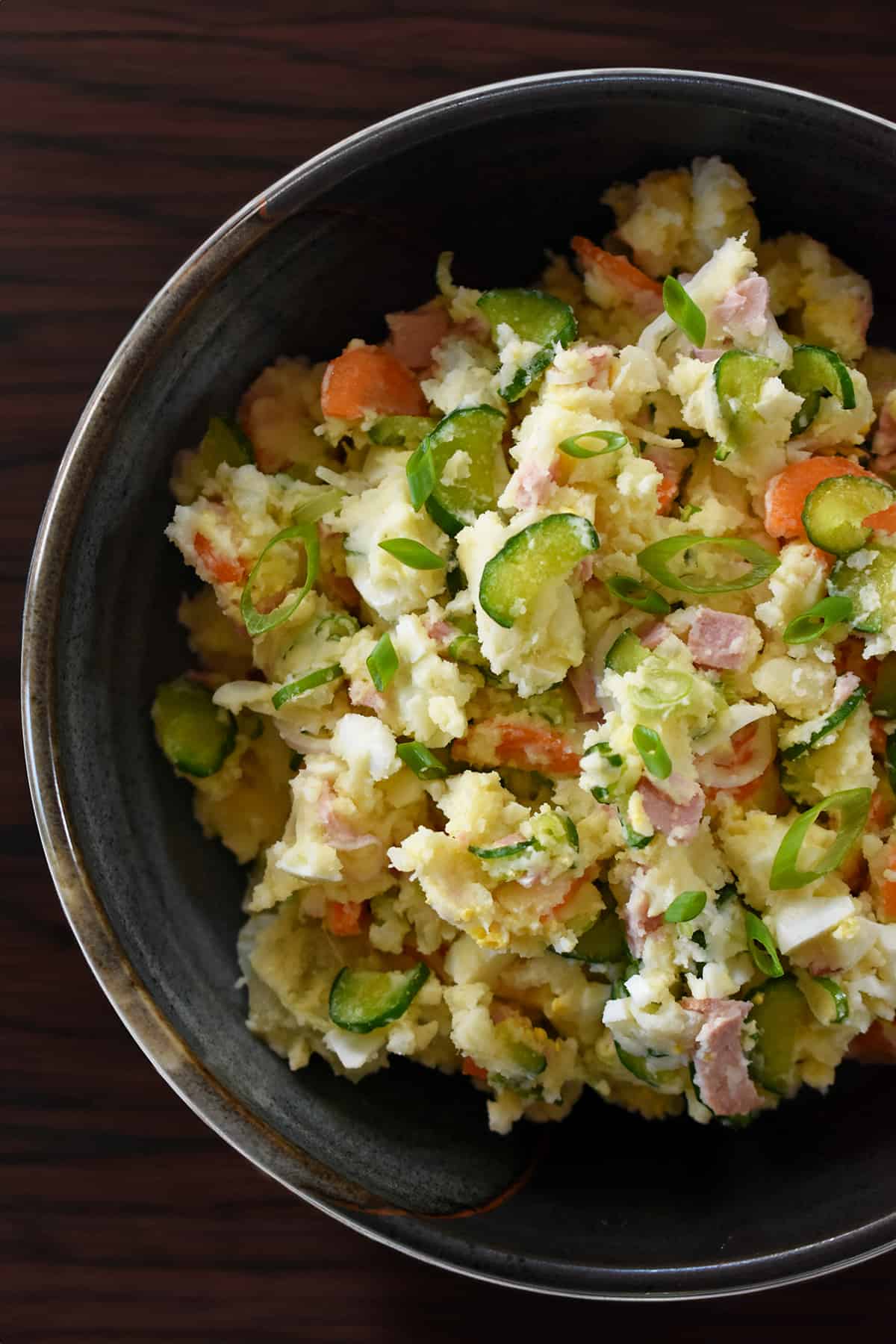
I’m a huge fan of yoshoku, or Western-influenced Japanese cooking, and this dish is a particularly tasty example of East-West fusion cuisine. I love Japanese potato salad so much that I developed a paleo-friendly version of it for our latest cookbook, Nom Nom Paleo: Let’s Go! and I’m sharing the recipe here today!
What is Japanese potato salad?
Japanese-style potato salad is a popular dish that is made with semi-mashed potatoes mixed with vegetables, ham, hard boiled egg, and mayonnaise. Although the salad’s inspired by Western-style potato salad, it uses Japanese mayonnaise (a.k.a. Kewpie mayonnaise) as the binder, a sweet and tangy umami-packed twist on regular mayonnaise. It also features less vinegar and more sweetness from the addition of corn, carrots, cucumber, and sometimes apple. The texture is creamy and smooth, with some crunchy thinly sliced vegetables folded in.
A Paleo and Whole30 Japanese potato salad recipe
To make Japanese potato salad Whole30- and paleo-friendly, you need to make some adjustments to the ingredients and the dressing. For example, instead of using Kewpie mayo, I blend together paleo-friendly mayonnaise with rice vinegar and mustard and leave out the sugar. Also, I choose sugar-free ham and leave out corn. (Yes, white potatoes are considered paleo and Whole30-compatible, but if they don’t agree with you, choose a potato-free salad recipe!)
Ingredients
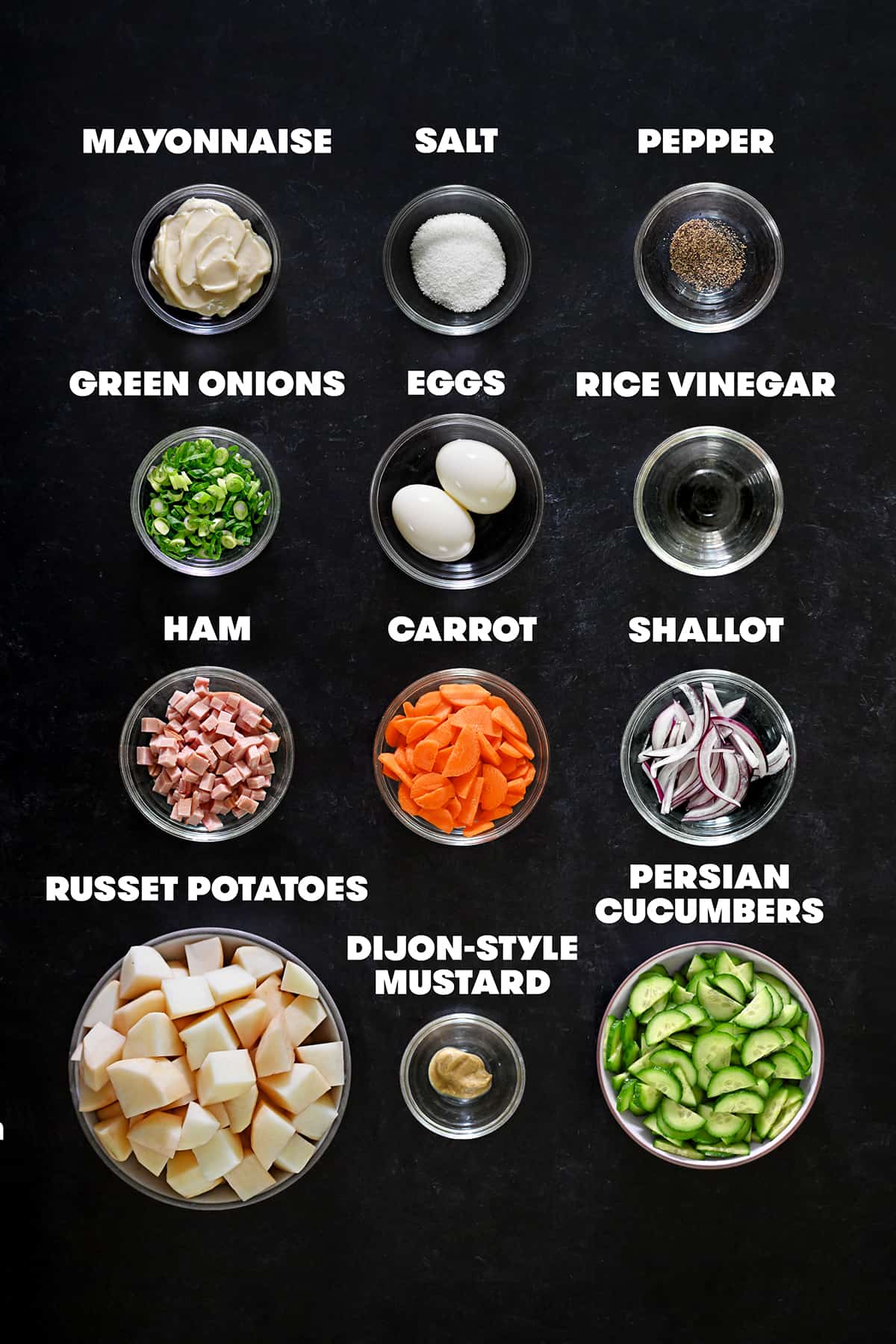
- Russet potatoes: I like using russet potatoes because their texture gets creamier than Yukon gold potatoes or red potatoes.
- Persian cucumbers: You can also use Japanese cucumbers or English cucumbers—just pick a thin-skinned cucumber that doesn’t have any seeds.
- Carrot
- Shallot or red onion: thinly slice a shallot or red onion and soak it in iced water to take out the harsh, spicy bite.
- Hard boiled eggs
- Sugar-free ham: meat is optional, but I love to add diced ham to the potato salad.
- Green onions
- Paleo mayonnaise: You can make homemade mayonnaise or use a store-bought mayo with compatible ingredients.
- Rice vinegar: make sure you choose an unseasoned rice vinegar to keep it Whole30-compatible!
- Dijon-style mustard
- Diamond Crystal kosher salt
- Freshly ground black pepper
How to make Japanese potato salad
Plop the potatoes into a large pot and add enough cold water to submerge them so that the potatoes are at least an inch below the water’s surface.
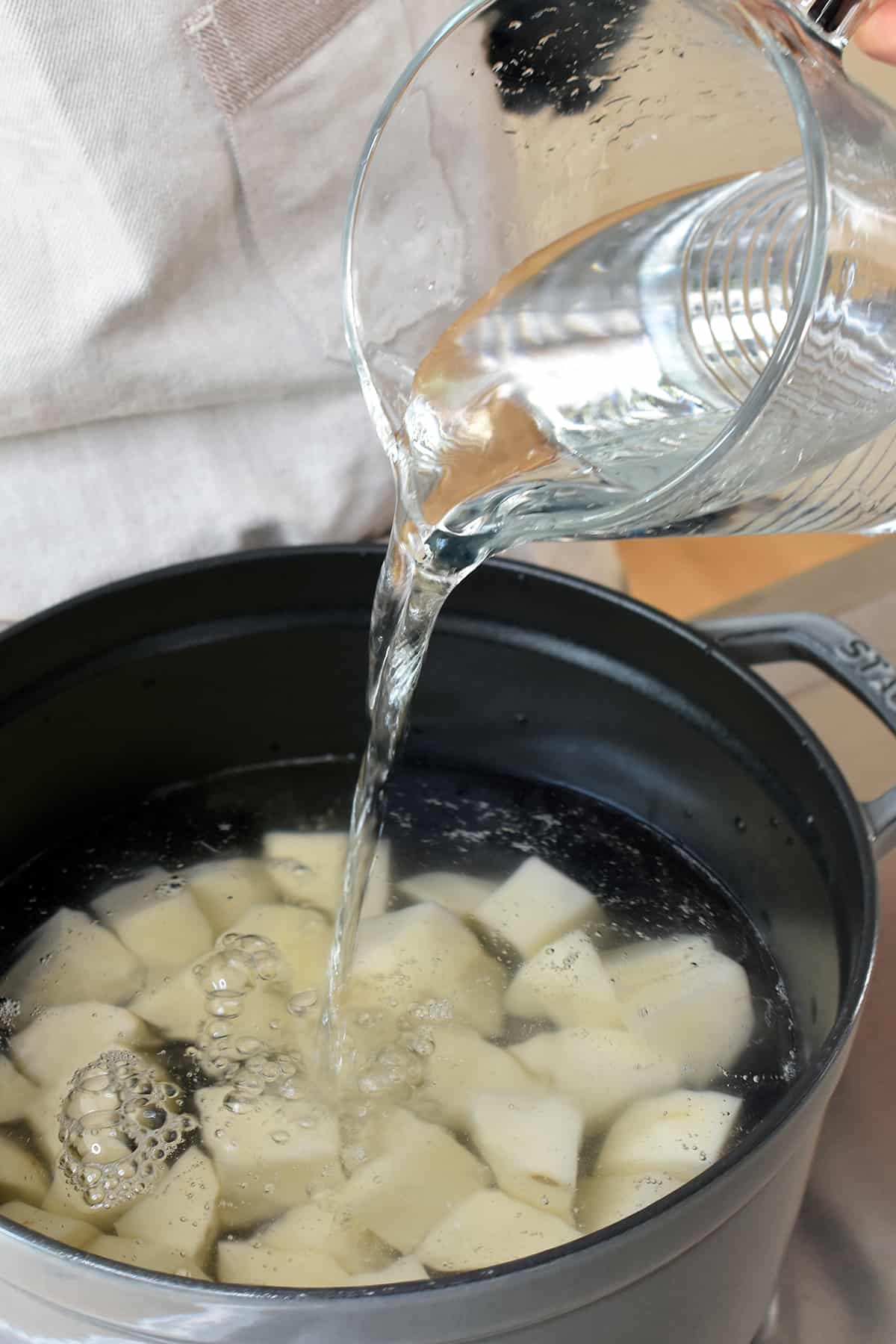
Add a generous pinch of salt and bring the contents of the pot to a boil over high heat.
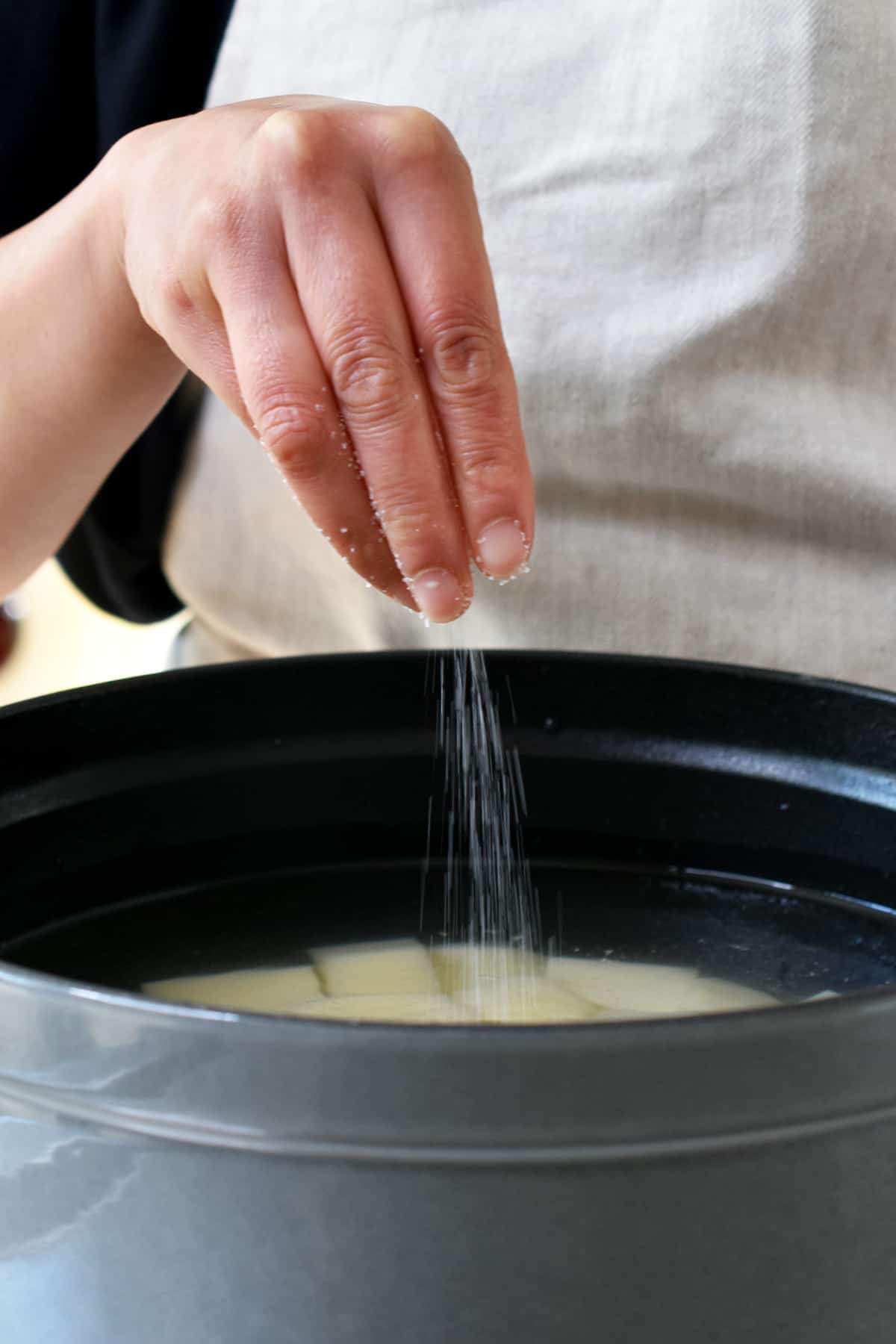
Decrease the heat to maintain a steady simmer. Cook for 10 minutes or until the potatoes are tender and can be easily pierced with a fork.
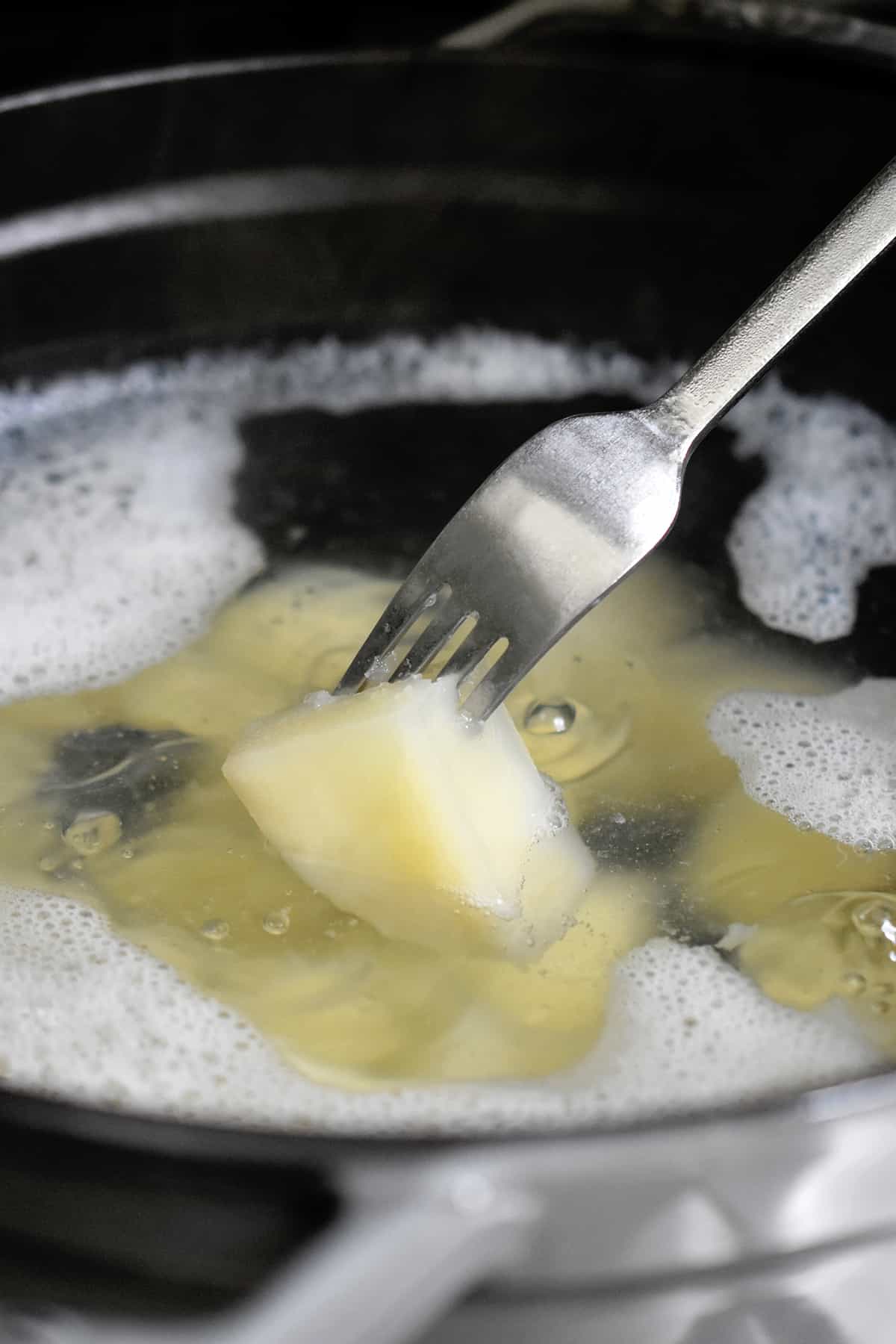
Drain the cooked potatoes and cool to room temperature. (Pop them in the fridge to chill them faster.)
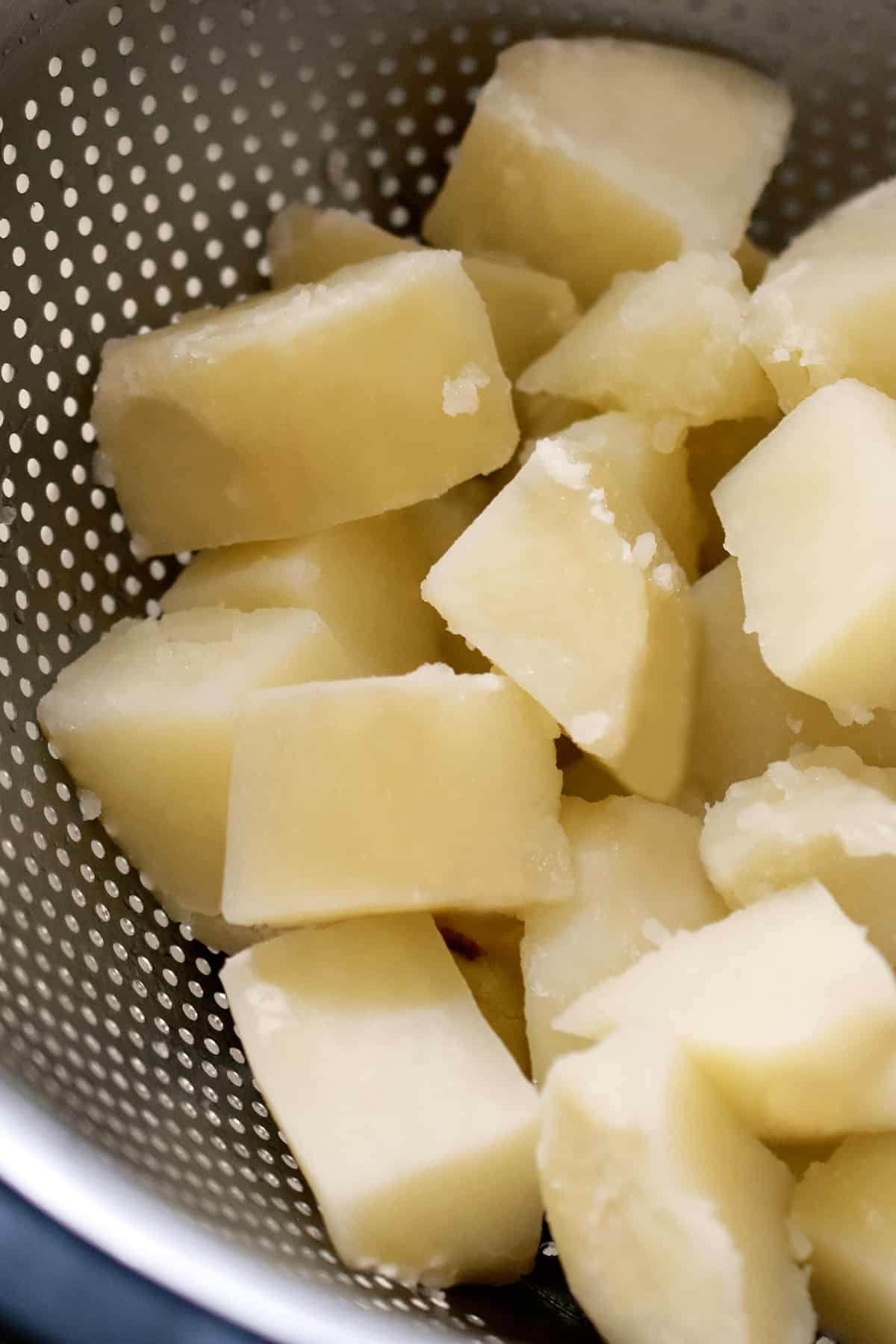
While the potatoes are cooking, toss the cucumber slices and ½ teaspoon of kosher salt in a small bowl. Set aside for at least 10 minutes so the excess moisture can be released.

Place the salted cucumber slices in a clean kitchen towel…
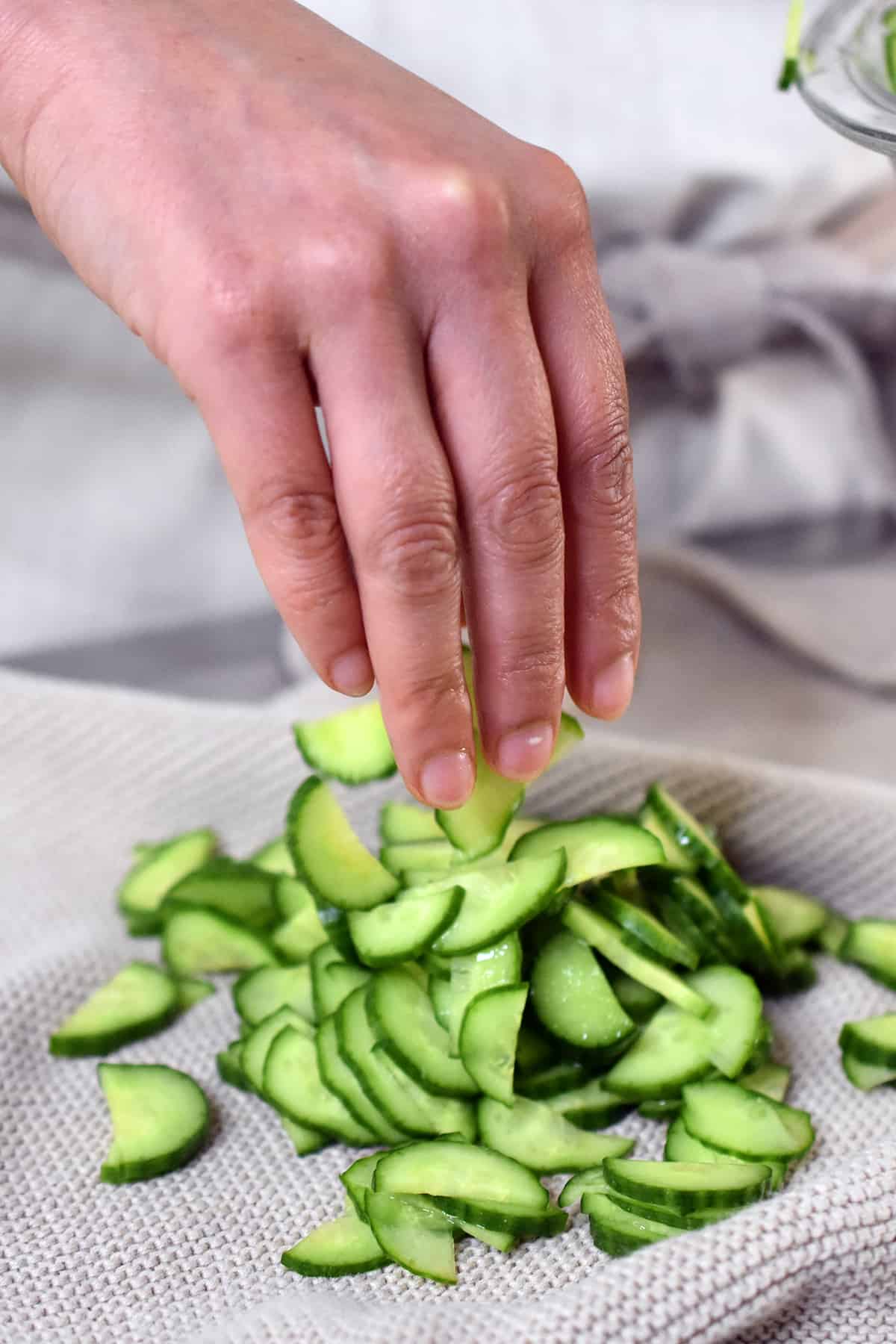
…and squeeze out and discard the liquid. Set aside the cucumber slices.
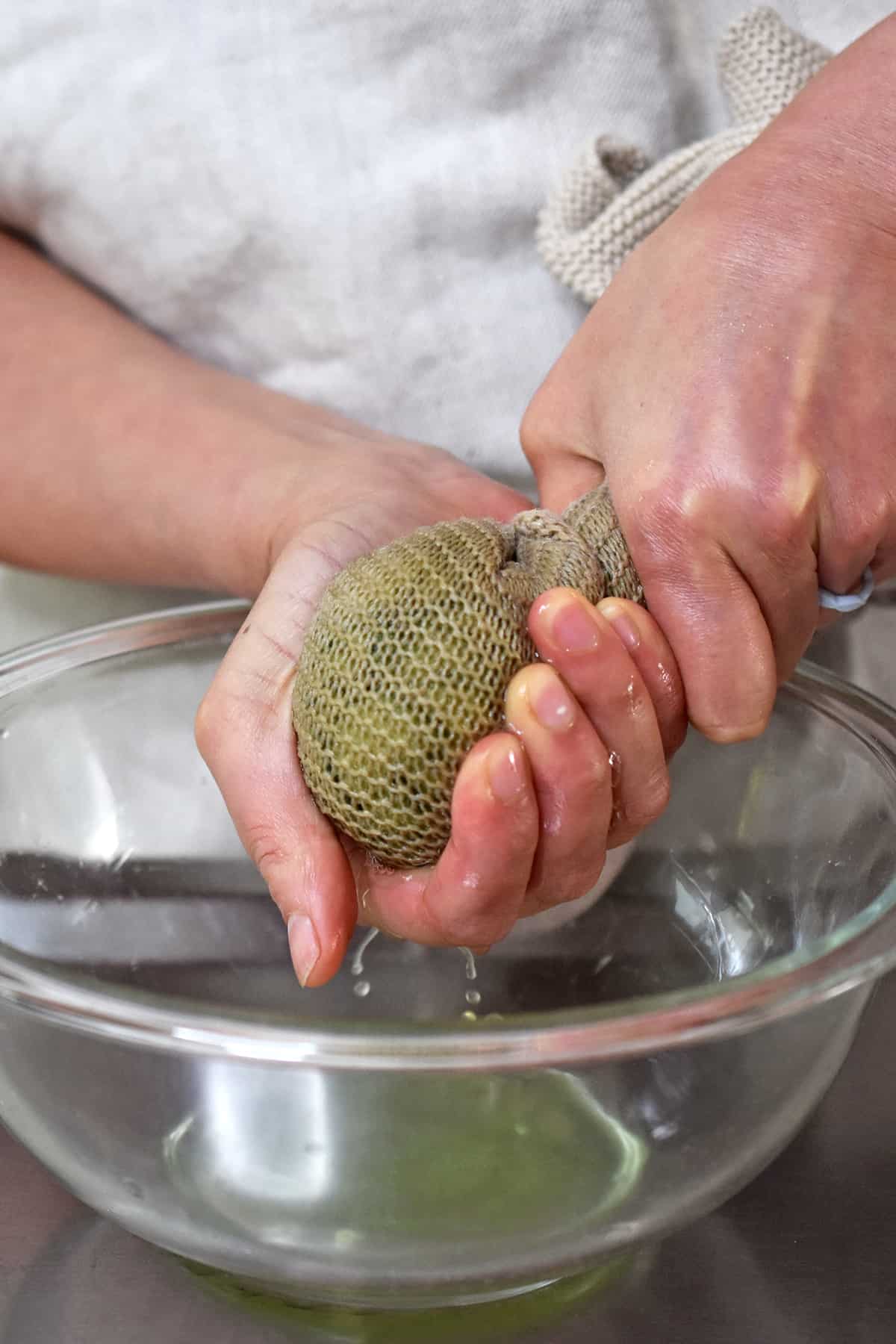
In a large bowl, stir together the paleo mayonnaise, rice wine vinegar, and mustard.

Add the cooled potatoes to the bowl. Mash well with a forker potato masher to incorporate the potatoes with the mayonnaise mixture. The resulting creamy texture should resemble chunky mashed potatoes.

Stir in the cucumbers, carrots, shallots, eggs, ham, and scallions.

Taste for seasoning and adjust with salt and pepper to taste.
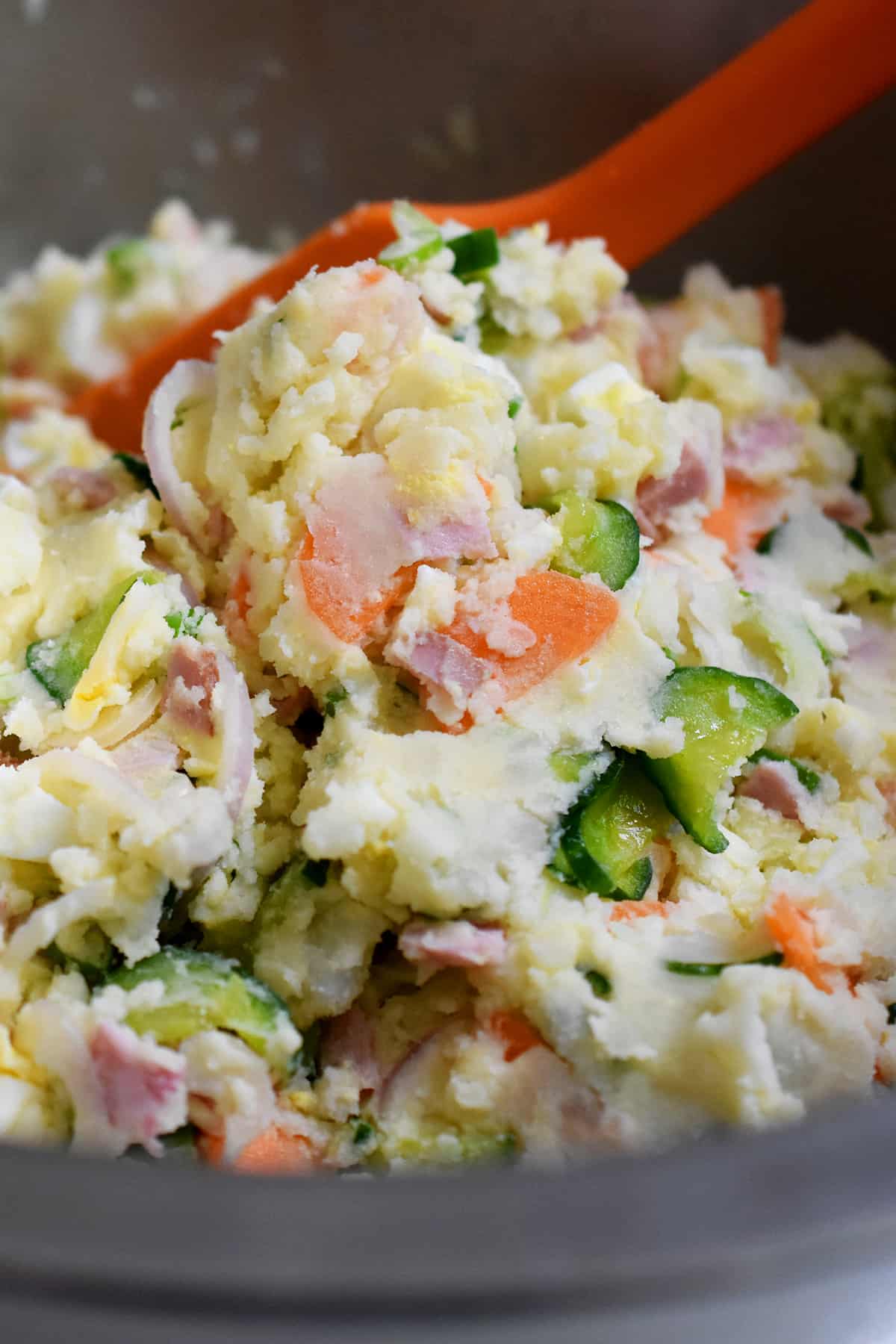
Serve immediately or chill in the fridge before serving!
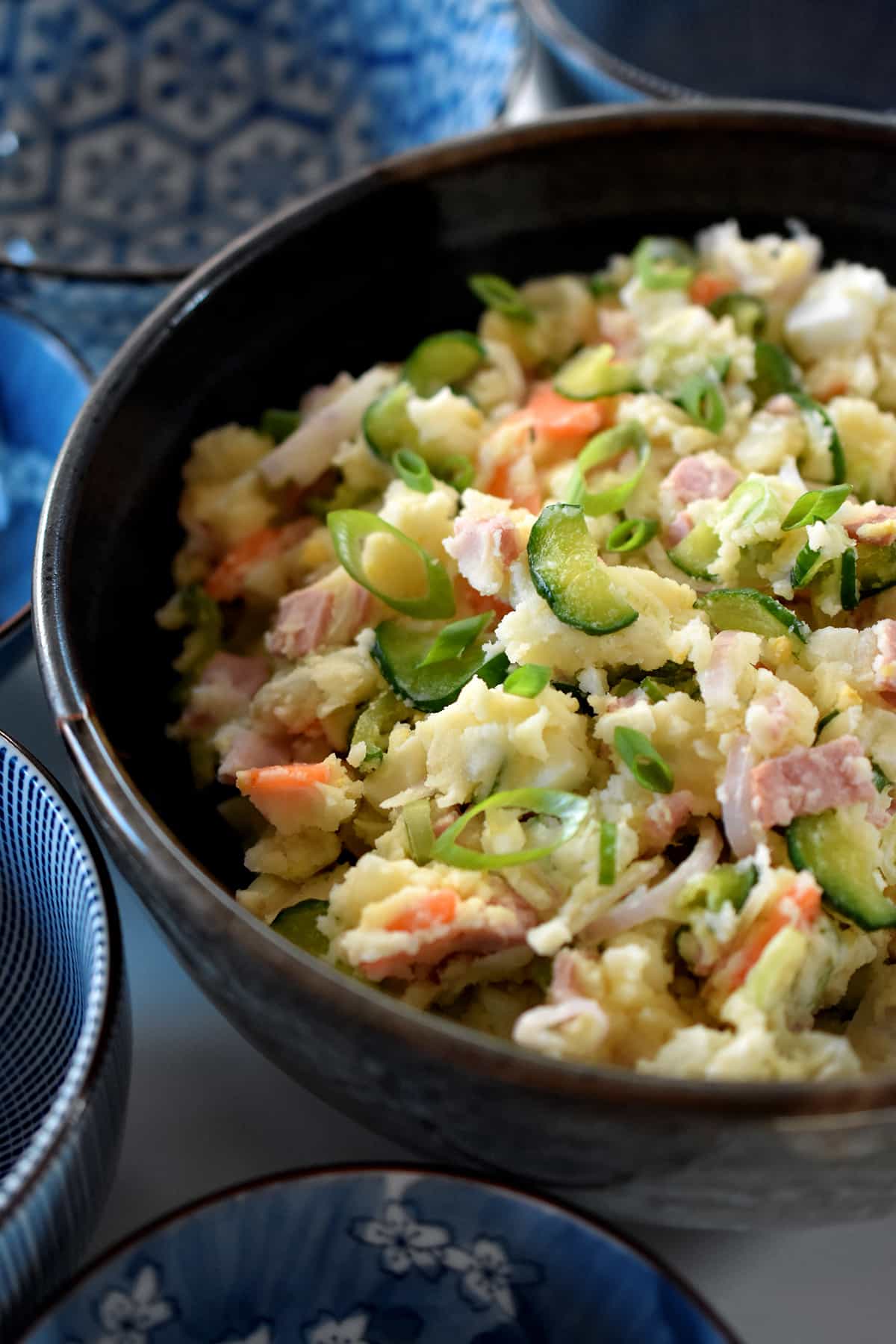
How do you save leftovers?
Leftover potato salad can be stored in a sealed container in the fridge for up to 4 days. I don’t recommend freezing potato salad because after it thaws, the texture isn’t great.
What can you serve it with?
Looking for more recipe ideas? Head on over to my Recipe Index. You’ll also find exclusive recipes on my iPhone and iPad app, and in my cookbooks, Nom Nom Paleo: Food for Humans (Andrews McMeel Publishing 2013), Ready or Not!(Andrews McMeel Publishing 2017), and Nom Nom Paleo: Let’s Go! (Andrews McMeel Publishing 2022).
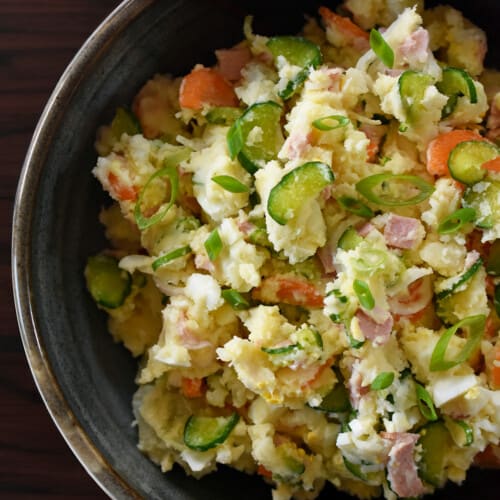
Japanese Potato Salad (Whole30, Paleo)
Ingredients
- 1½ pounds russet potatoes, peeled and cut into 1½ inch cubes
- Diamond Crystal kosher salt
- 2 Persian cucumbers, thinly sliced into half-moons
- ⅓ cup paleo mayonnaise
- 2 teaspoons rice vinegar
- 1 teaspoon Dijon mustard
- 1 small carrot, thinly sliced into half-moons
- ¼ cup thinly sliced shallot or red onion, soaked for 10 minutes in ice water and drained
- 2 hard boiled eggs, roughly chopped
- ½ cup diced ham (optional)
- 2 scallions, thinly sliced
- Freshly ground black pepper
Instructions
- Plop the potatoes into a large pot and add enough cold water to submerge them so that the potatoes are at least an inch below the water’s surface. Add a generous pinch of salt and bring the contents of the pot to a boil over high heat.
- Decrease the heat to maintain a steady simmer. Cook for 10 minutes or until the potatoes are tender and can be easily pierced with a fork. Drain the cooked potatoes and cool to room temperature. (Pop them in the fridge to chill them faster.)
- While the potatoes are cooking, toss the cucumber slices and ½ teaspoon of kosher salt in a small bowl. Set aside for at least 10 minutes so the excess moisture can be released.
- Place the salted cucumber slices in a clean kitchen towel and squeeze out and discard the liquid. Set aside the cucumber slices.
- In a large bowl, stir together the paleo mayonnaise, rice wine vinegar, and mustard.
- Add the cooled potatoes to the bowl. Mash well with a forker potato masher to incorporate the potatoes with the mayonnaise mixture. The resulting creamy texture should resemble chunky mashed potatoes.
- Stir in the cucumbers, carrots, shallots, eggs, ham, and scallions. Taste for seasoning and adjust with salt and pepper to taste. Serve immediately or chill in the fridge before serving!
Notes
Nutrition
The post Japanese Potato Salad appeared first on Nom Nom Paleo®.
